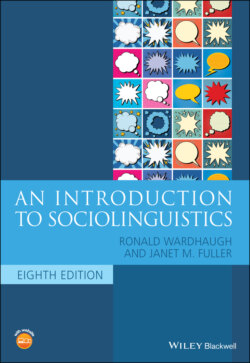Читать книгу An Introduction to Sociolinguistics - Ronald Wardhaugh, Janet M. Fuller - Страница 56
African American Vernacular English
ОглавлениеInterest in African American Vernacular English (AAVE) grew in part out of the observation that the speech of many Black residents of the northern United States, in New York City, Philadelphia, Washington, DC, Baltimore, Detroit, and Chicago, resembles the speech of Blacks in southern states in many respects, yet differs from the speech of Whites in their respective regions. To some extent, this similarity is the result of the relatively recent migrations of Blacks out of the south, but it is also a reflection of long‐standing patterns of racial segregation. Linguists have referred to this variety of speech as Black English, Black Vernacular English, and African or Afro‐American English. Today, probably the most‐used term is African American Vernacular English, and we will use this term (abbreviated as AAVE), although in our discussions of research by particular authors we will use whatever term they used. (The term Ebonics – a blend of Ebony and phonics – has also recently achieved a certain currency in popular speech, but it is not a term we will use in discussion of sociolinguistic research.) It should be also noted that variation in AAVE according to region (e.g., Hinton and Pollock 2000; Jones 2015; Wolfram and Thomas 2008), age (e.g., Rickford 1999; Wolfram and Thomas 2002), and social class (e.g., Britt and Weldon 2015; Linnes 1998; Weldon 2004; Wolfram 2007) has also been studied and that these social variables form an essential aspect of ongoing research. Indeed, the The Oxford Handbook of African American Language (Lanehart 2015, listed in Further Reading below) presents research that addresses variation within AAVE as well as the social factors, functions, and consequences of this variation.
